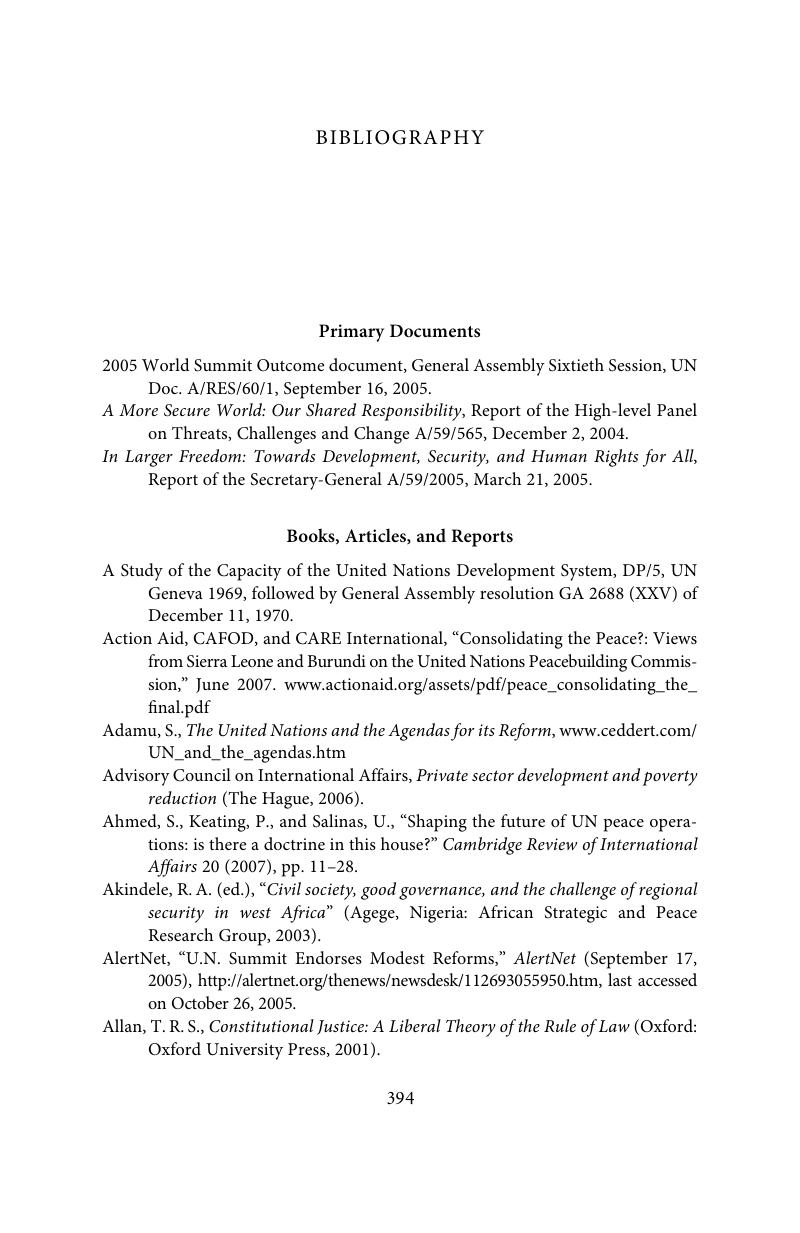Book contents
- Frontmatter
- Contents
- List of contributors
- Series editors' preface
- Preface
- List of abbreviations
- Introduction: the new collective security
- PART I Law and politics in United Nations reform
- PART II Defining “threats” to collective security
- PART III Prevention and responses
- PART IV Perspectives on the ground
- Bibliography
- Index
- References
Bibliography
Published online by Cambridge University Press: 05 May 2010
- Frontmatter
- Contents
- List of contributors
- Series editors' preface
- Preface
- List of abbreviations
- Introduction: the new collective security
- PART I Law and politics in United Nations reform
- PART II Defining “threats” to collective security
- PART III Prevention and responses
- PART IV Perspectives on the ground
- Bibliography
- Index
- References
Summary

- Type
- Chapter
- Information
- United Nations Reform and the New Collective Security , pp. 394 - 421Publisher: Cambridge University PressPrint publication year: 2010

